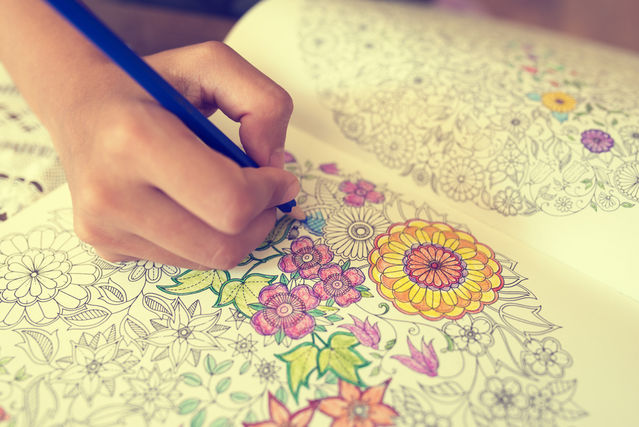What’s the Deal With Adult Coloring Books?
Buyers may come for the nostalgia but stay for the inspiration.
By Emily Silber published September 5, 2016 - last reviewed on November 25, 2016
Loaded with geometric patterns, gripping landscapes, and intricate animal designs, the coloring books that line the displays of bookstores nationwide are no longer just for children. With titles like The Mindfulness Coloring Book, Colors of Loss and Healing, and Color Me Stress-Free, publishers are targeting grown-ups who seek a novel way to relax, clear their minds, and even cope with difficult emotions.
Is something more than marketing driving this seemingly regressive fad? Research on the psychological benefits of coloring is sparse, but some in the field say there are reasons to believe that it can offer real comfort. “Distress usually comes from external pressures or internal fears of things that you cannot control,” explains clinical psychologist Ben Michaelis, who has recommended coloring books to some of his clients. “When you are coloring, you are engaged in a highly structured activity that is generally not goal-oriented. It changes your focus to something more manageable and, as a result, you experience less distress.” Even if coloring does not help people process negative feelings directly, he says, it may at least offer an effective form of relief.

Sondem/Shutterstock
The books may have less obvious benefits, too. Suppose you are working on a task that requires creative thinking and you can’t progress any further. A 2012 study in Psychological Science showed that people who took a break from problem solving by engaging in a deliberately easy activity—which corresponded with an increase in mind wandering—fared better on subsequent tasks. A mental pit stop in the form of a coloring session may help set people up for upcoming challenges. There’s also some evidence that, in combination with other activities, repetitive penciling can increase concentration: A 2009 study found that participants who shaded in shapes while listening to a recorded message remembered more details than those who did not. According to Claire Zedelius, a creativity researcher at the University of California, Santa Barbara, the experience of coloring might inspire “a relatively mindful state with some mind wandering.”
Productivity aside, coloring can be its own reward. Michaelis argues that there is inherent worth in artistic pursuits, even one as straightforward as, say, tastefully decorating a two-dimensional tiger. “The very act of creating implies that there is something inside of us that has value,” he says. Consider that sense of affirmation along with the nostalgic feelings that a common childhood activity has the potential to evoke, and it becomes clearer why so many jump at the chance to pick up a box of colored pencils.
Facebook image: Kleber Cordeiro/Shutterstock
